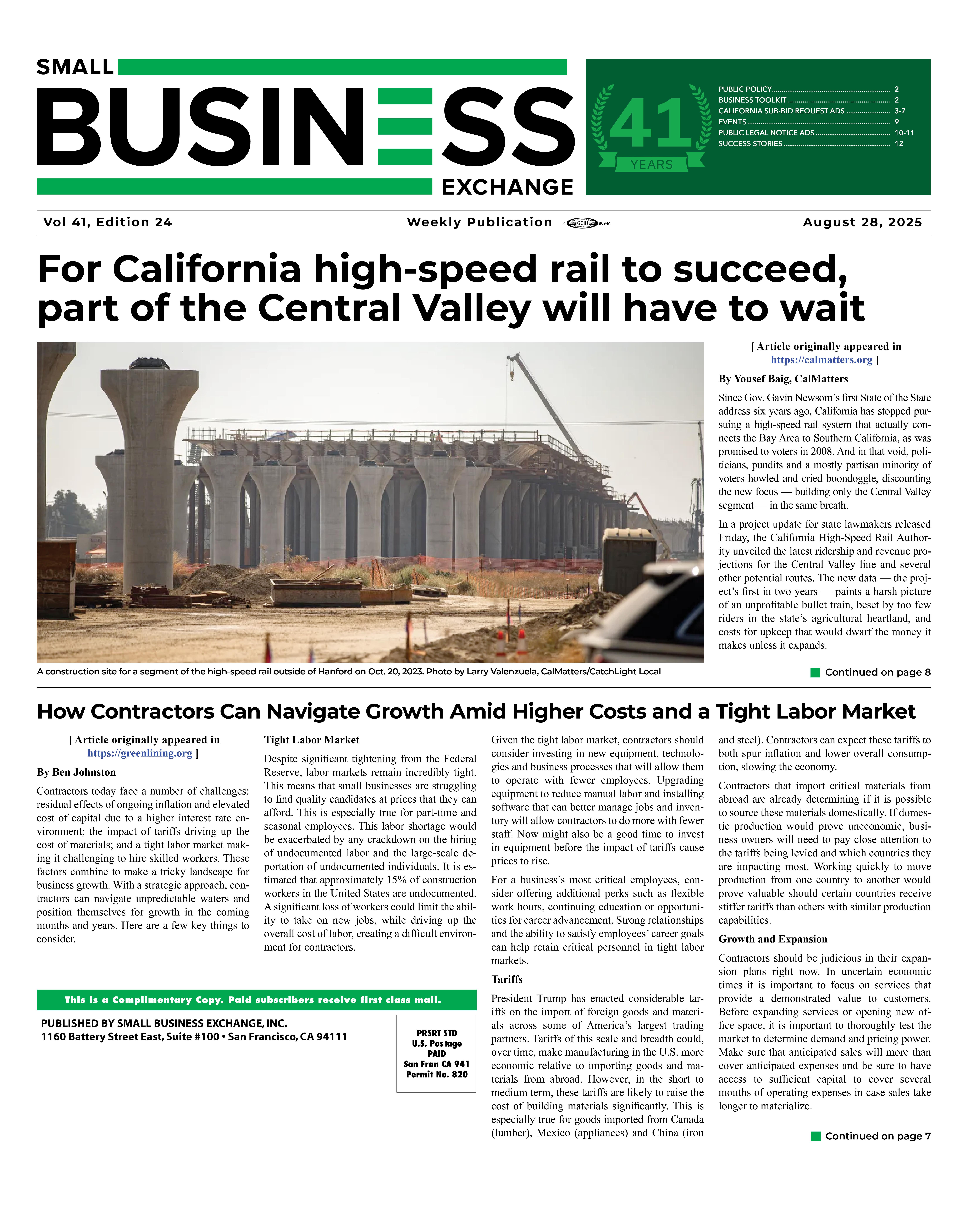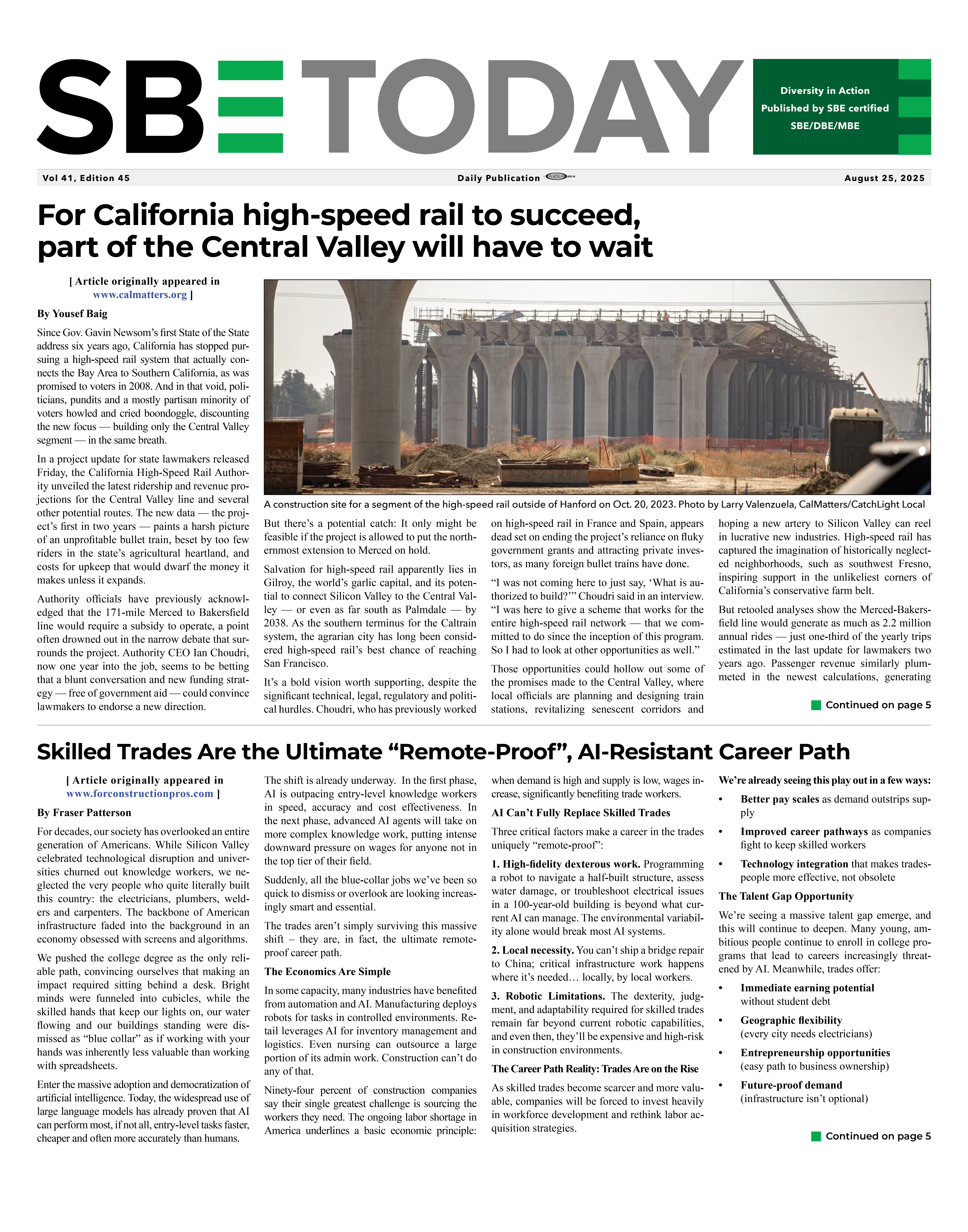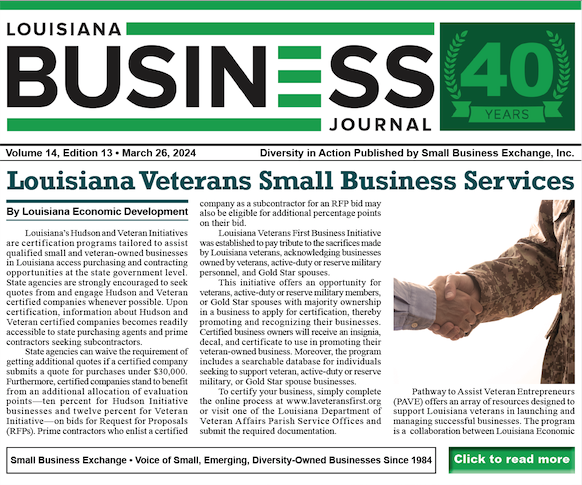The Delta Conveyance Project is the most consequential water infrastructure project in recent California history, and will help ensure that the state can continue to provide water for people, businesses, and farmland throughout the state. The Delta Conveyance Project will upgrade the State Water Project, enabling California’s water managers to capture and move more water during high-flow atmospheric rivers to better endure dry seasons. The tunnel, a modernization of the infrastructure system that delivers water to millions of people, would improve California’s ability to take advantage of intense periods of rain and excess flows in the Sacramento River.
The process to begin construction of the current Delta Conveyance Project began in 2019 when Governor Newsom withdrew the previous “Water Fix” twin tunnels project and began a new environmental process to study a single-tunnel proposal. As in previous iterations of Delta conveyance, requirements for environmental analysis, public review and comment under CEQA and other permitting processes were completed, including extensive public outreach and more than 7,000 comments and responses.
DWR’s Accountability Action Plan follows best practices for how to ensure the local community can productively communicate with project representatives and monitor community commitments throughout the construction process.
With public transparency being its most important tenet, the plan seeks to facilitate awareness of the numerous available programs and commitments made and aims to foster assurance and trust among interested parties that DWR’s intent is comprehensive, earnest and binding.
Protecting Delta communities
The Delta Conveyance Accountability Action Plan has five key components:
Ombudsman Office: The Ombudsman Office will provide for a single point of contact to help ensure that construction-related concerns or grievances are efficiently and fairly addressed and project transparency is sustained.
Regulatory Mitigation: The Mitigation Monitoring and Reporting Program and other regulatory processes identify measures, commitments and best practices intended to avoid, minimize or offset potential environmental impacts within the project area.
Community Benefits Program: The Community Benefits Program—with a dedicated $200 million fund—will seek to deliver tangible, lasting and measurable benefits to communities nearest to, and most affected by, project construction activities.
Community Advisory Groups: One or more community advisory groups will engage community members in decision-making related to various items.
Project Communications: Information, Outreach, Engagement: A transparent, accessible, and proactive communication strategy will keep local communities informed about the project’s progress, impacts, schedule, and available resources, fostering trust and engagement through timely updates, community feedback channels, and clear, inclusive messaging.
What’s at stake
The Delta Conveyance Project would create much-needed and long-overdue improvements to the State Water Project, which provides water for 27 million people and 750,00 acres of farmland. It would allow the State Water Project to better capture high flows during storm events and move that water to where it’s needed in the San Joaquin Valley, Southern California, Bay Area, and Central Coast. It would also protect against earthquake risk.
The Governor will continue working to quickly advance these improvements to ensure that California is ready for a drier and hotter future, and its communities are safe and protected.
SOURCE: https://www.gov.ca.gov/2025/08/06/newsom-administration-launches-delta-conveyance-project-accountability-plan-includes-200-million-in-funding-and-support-for-delta-communities/





